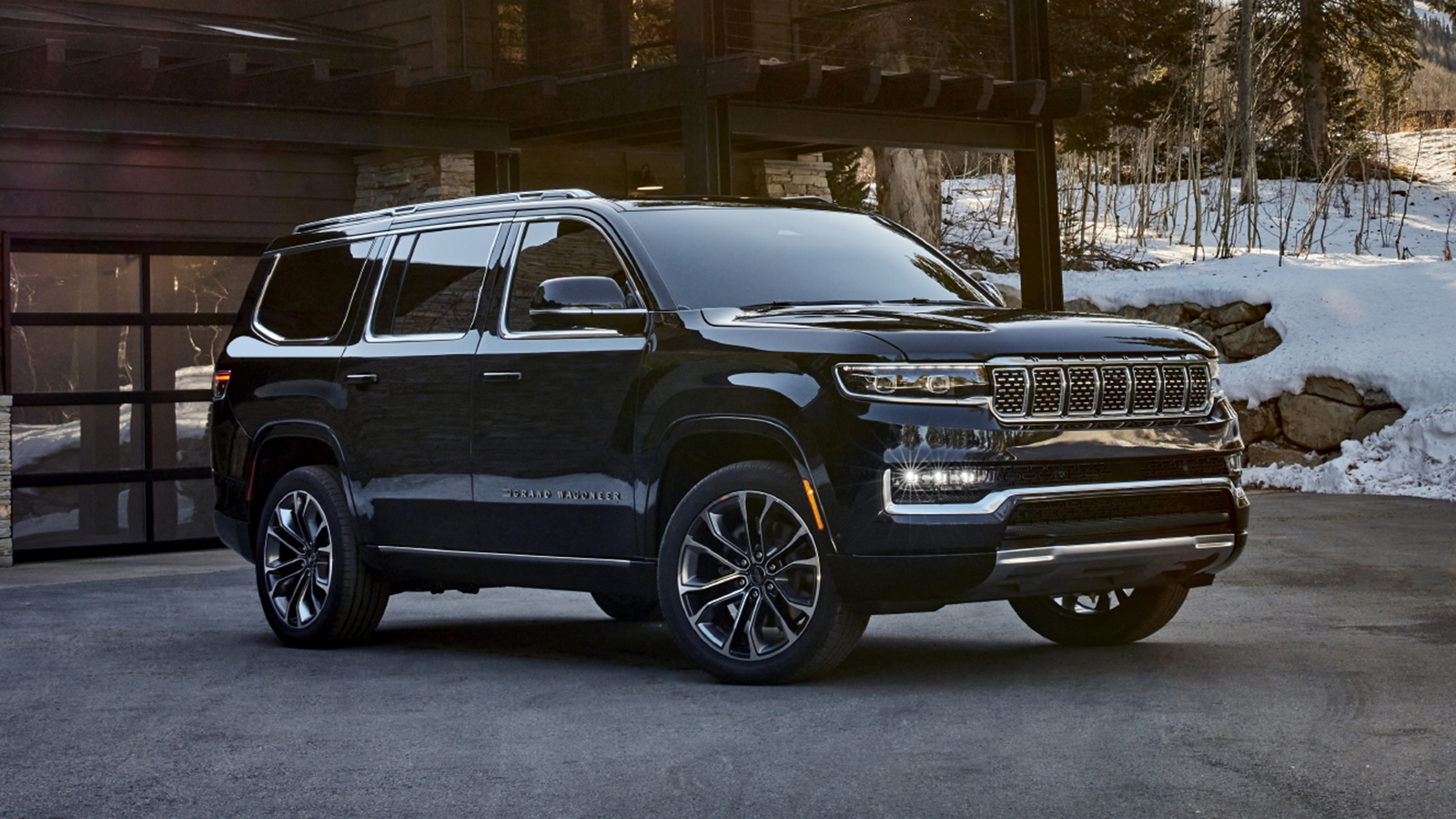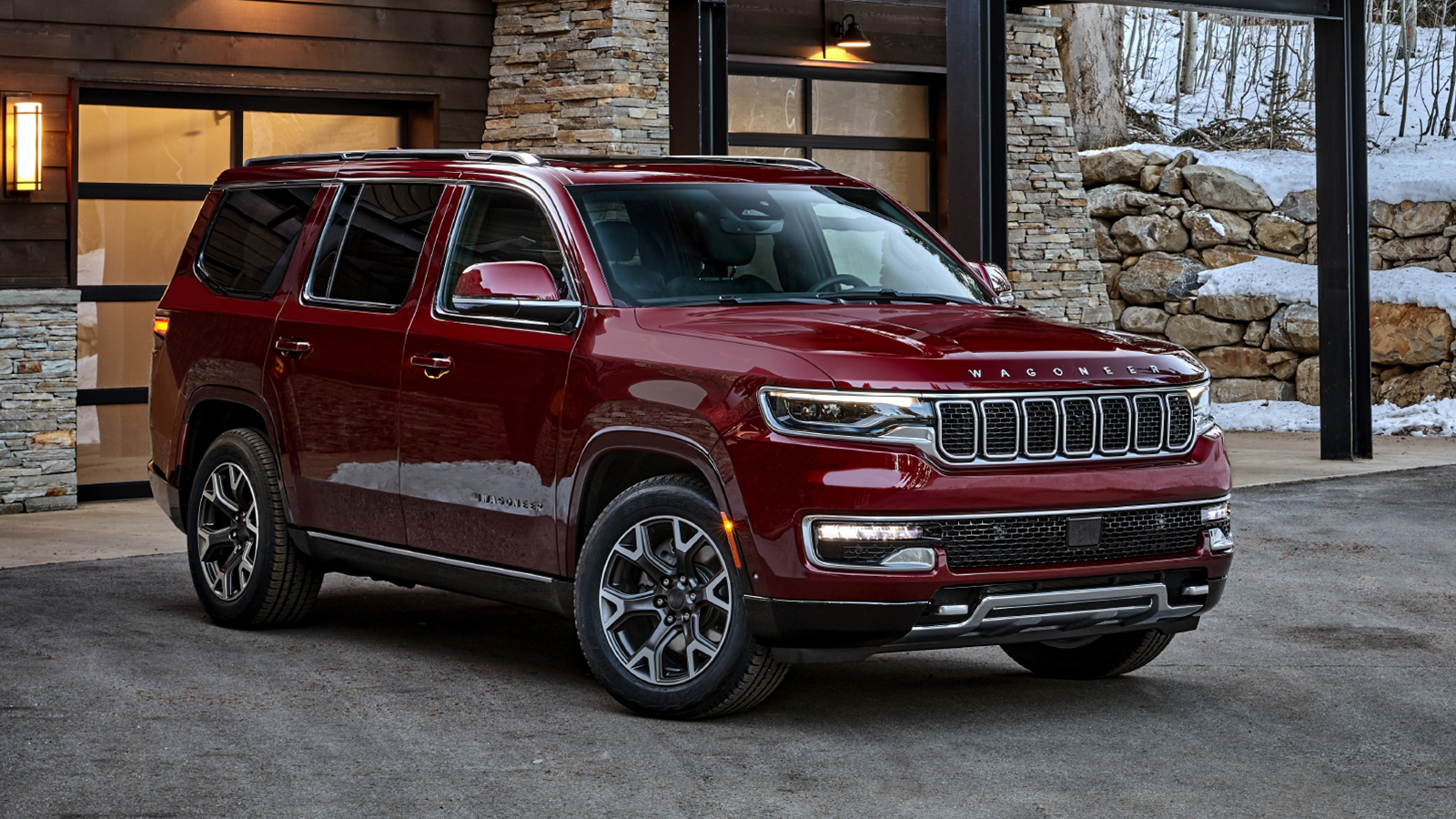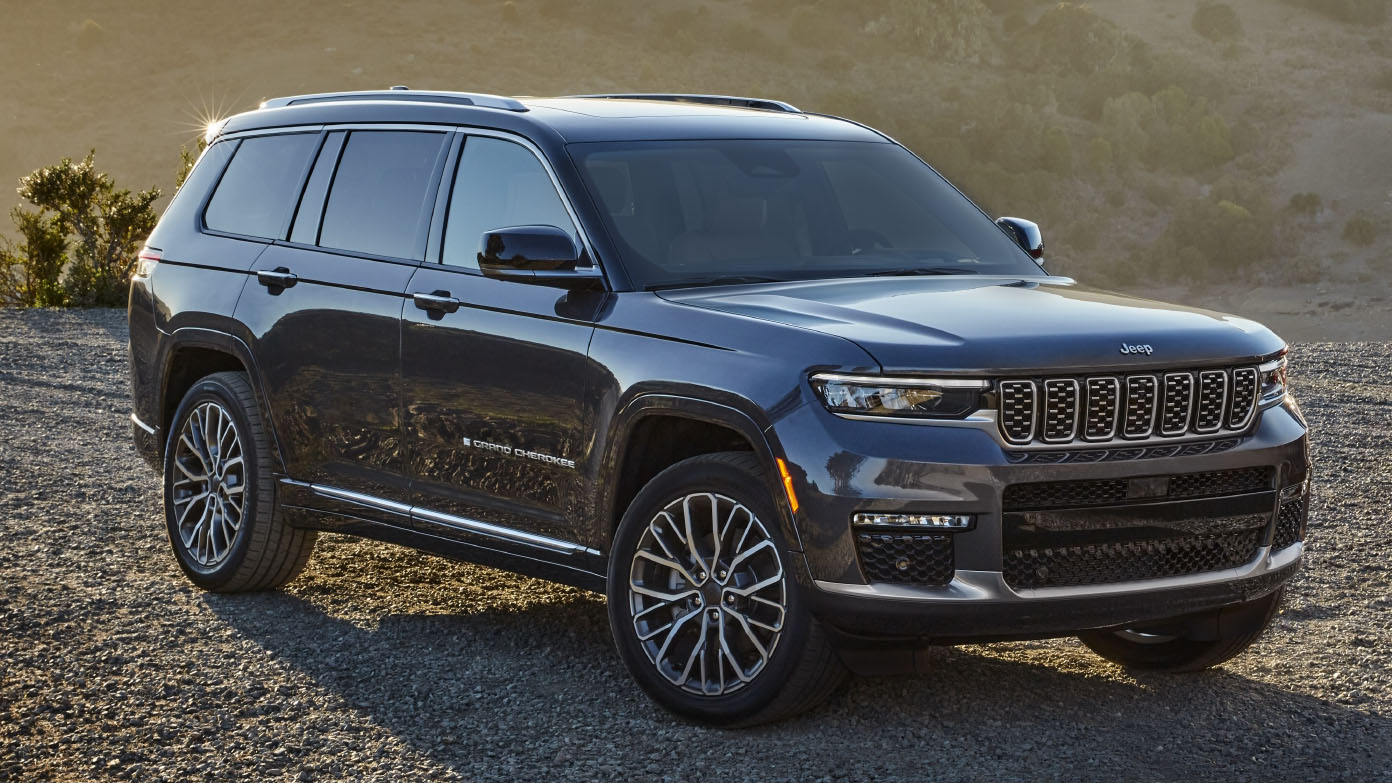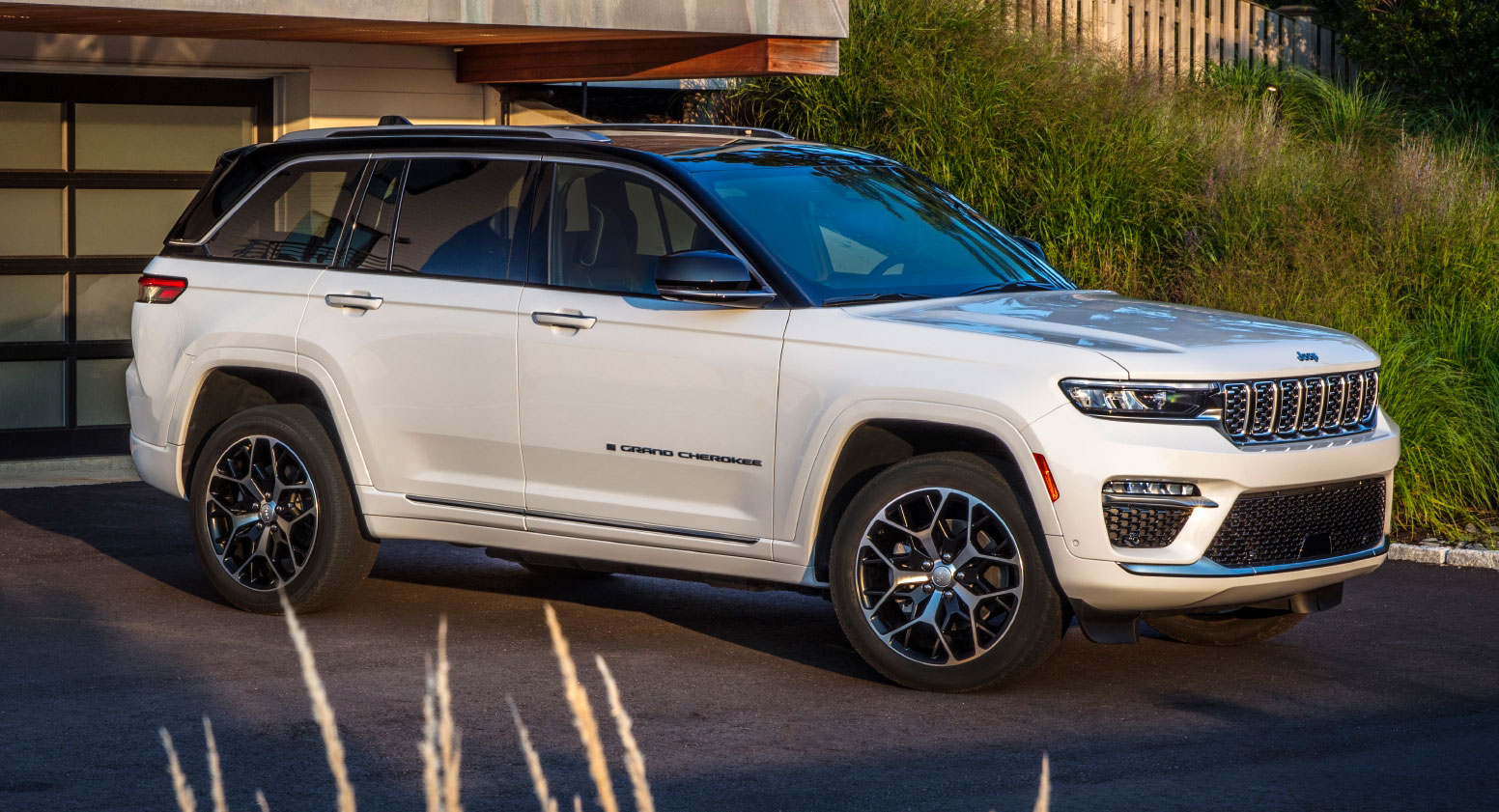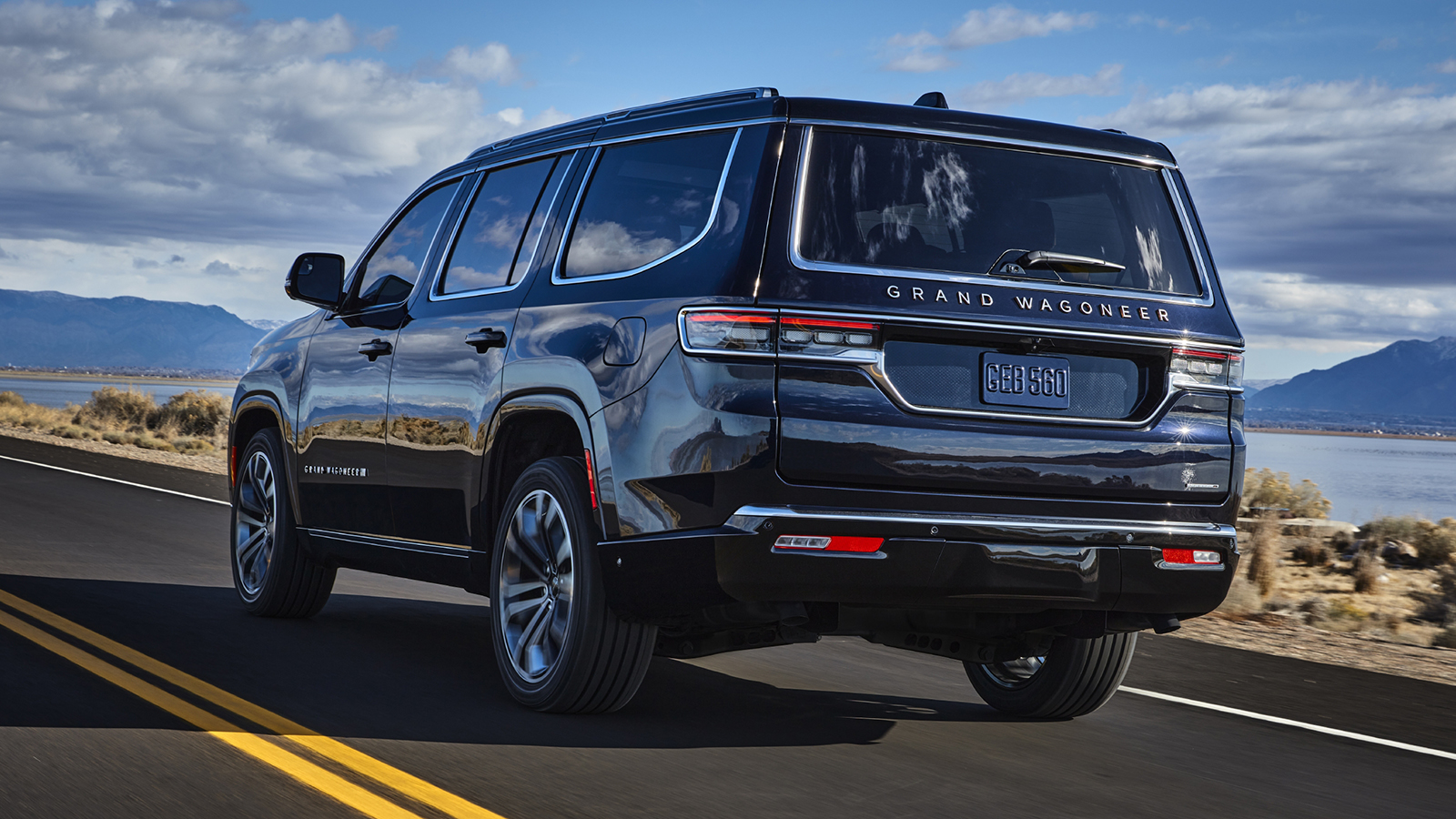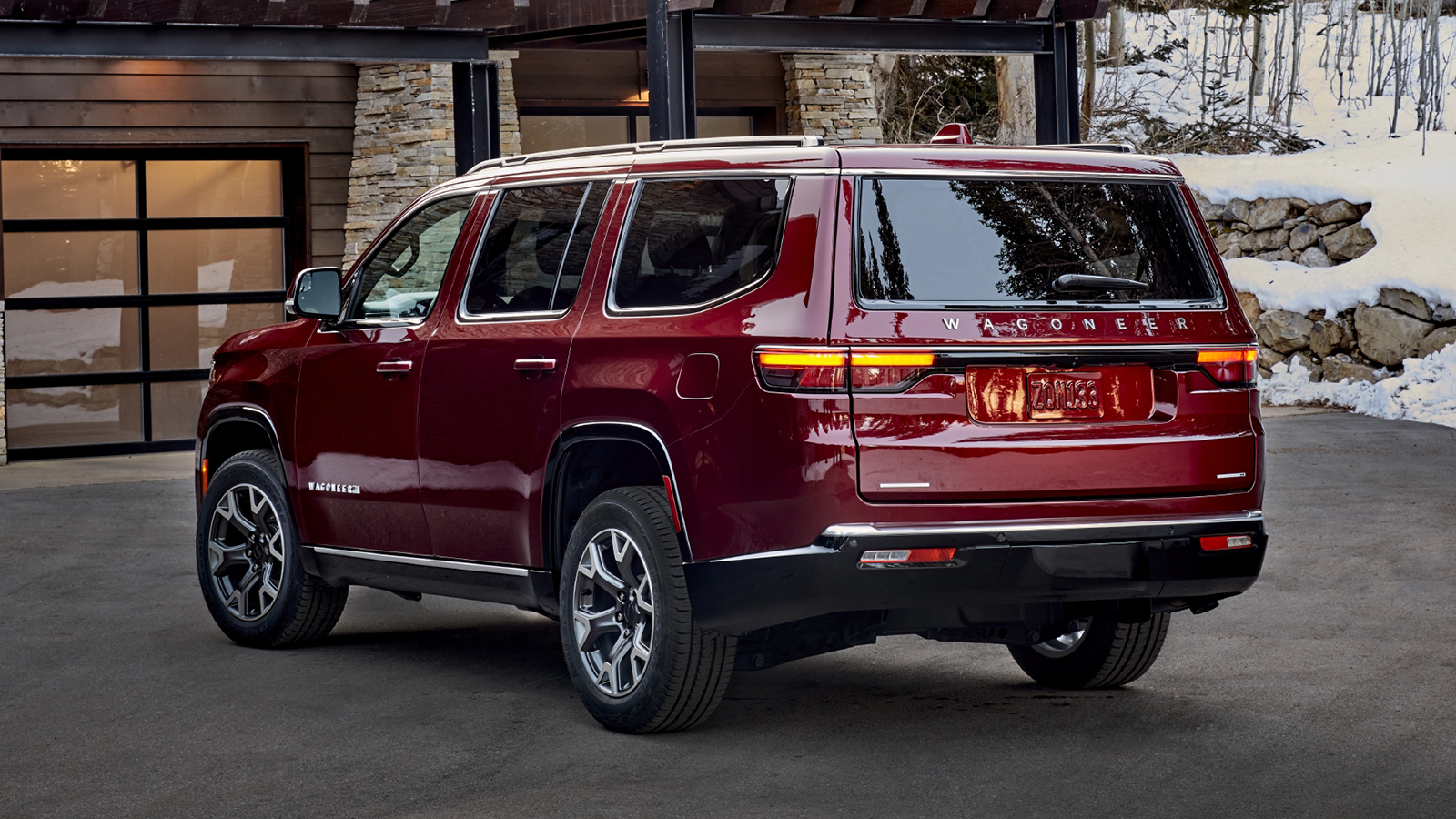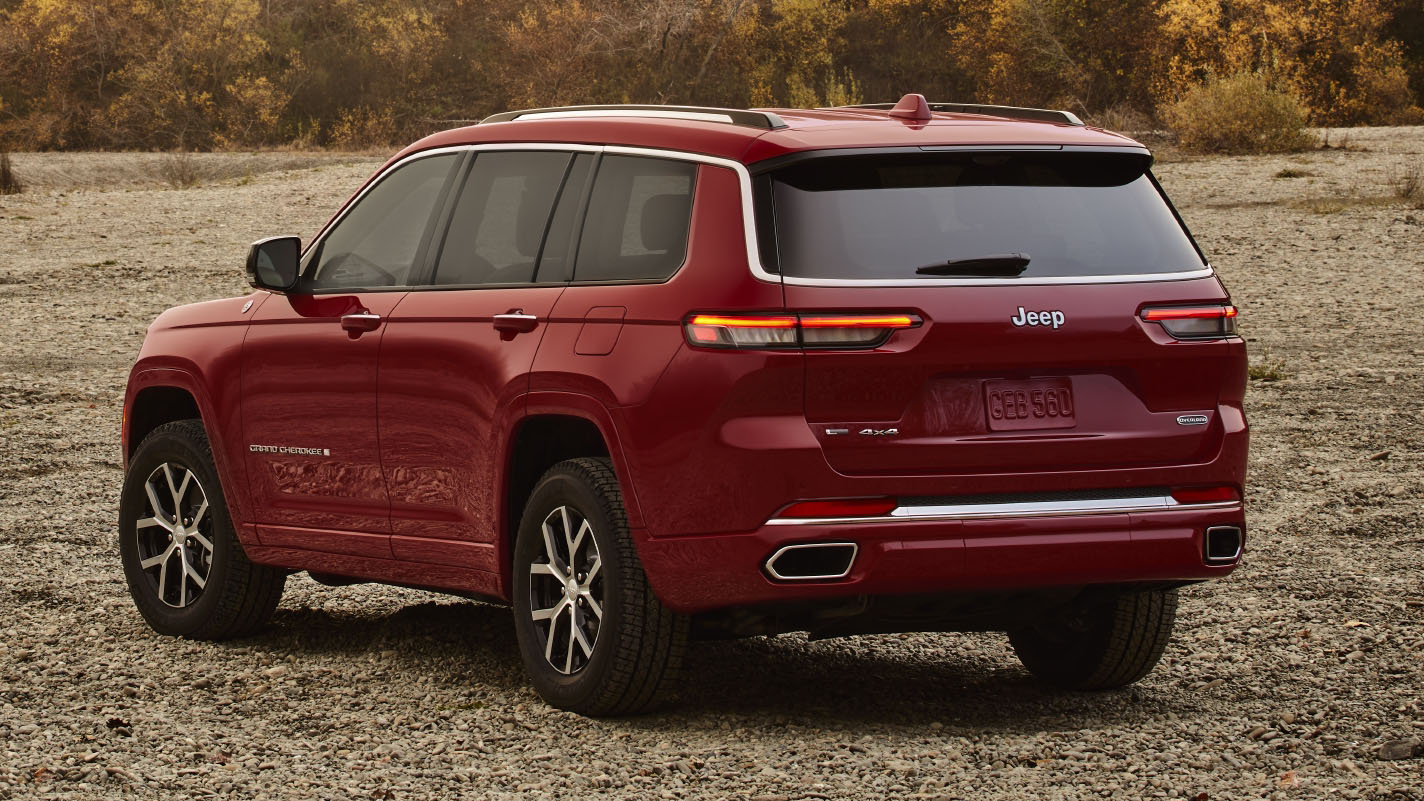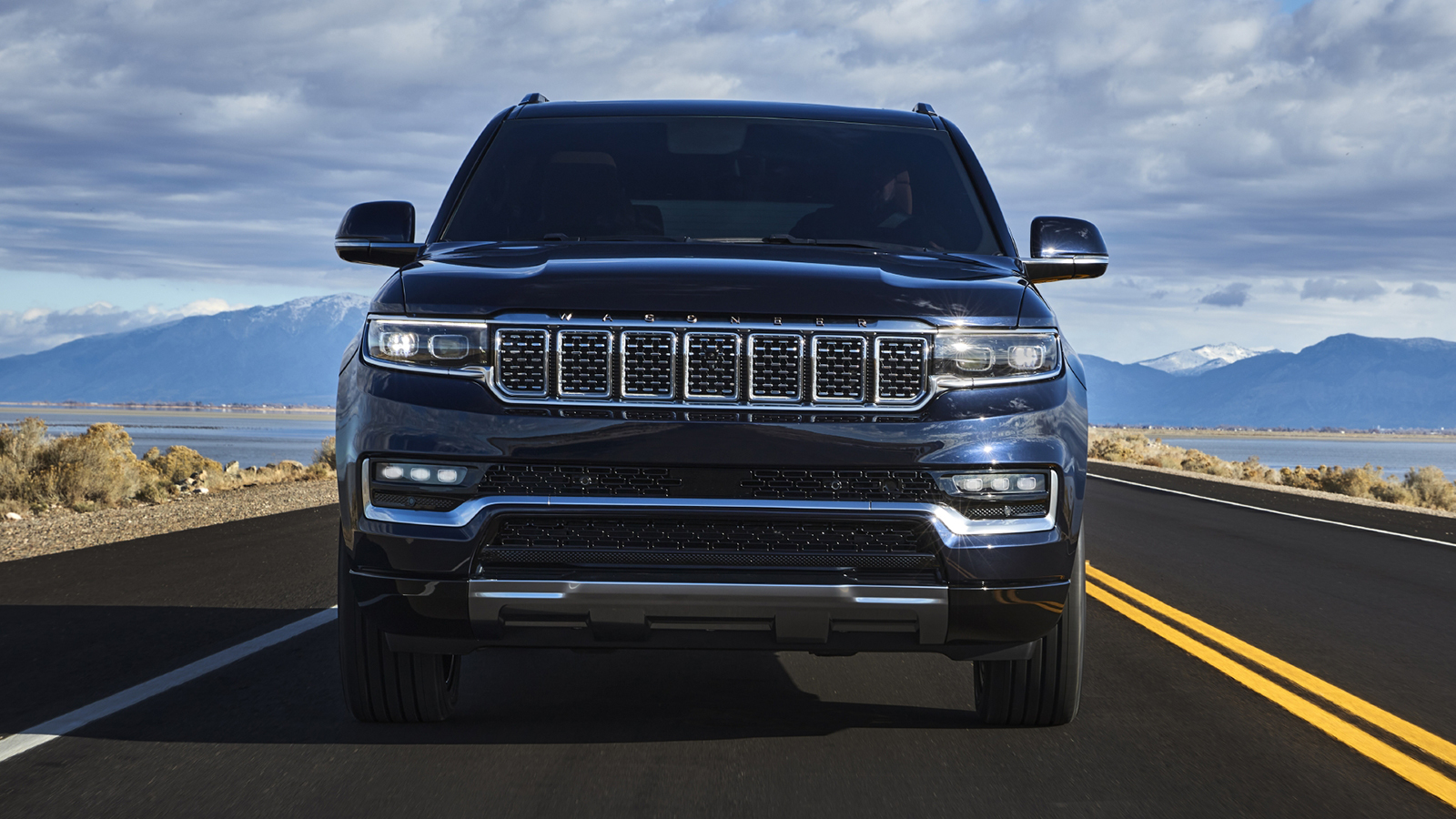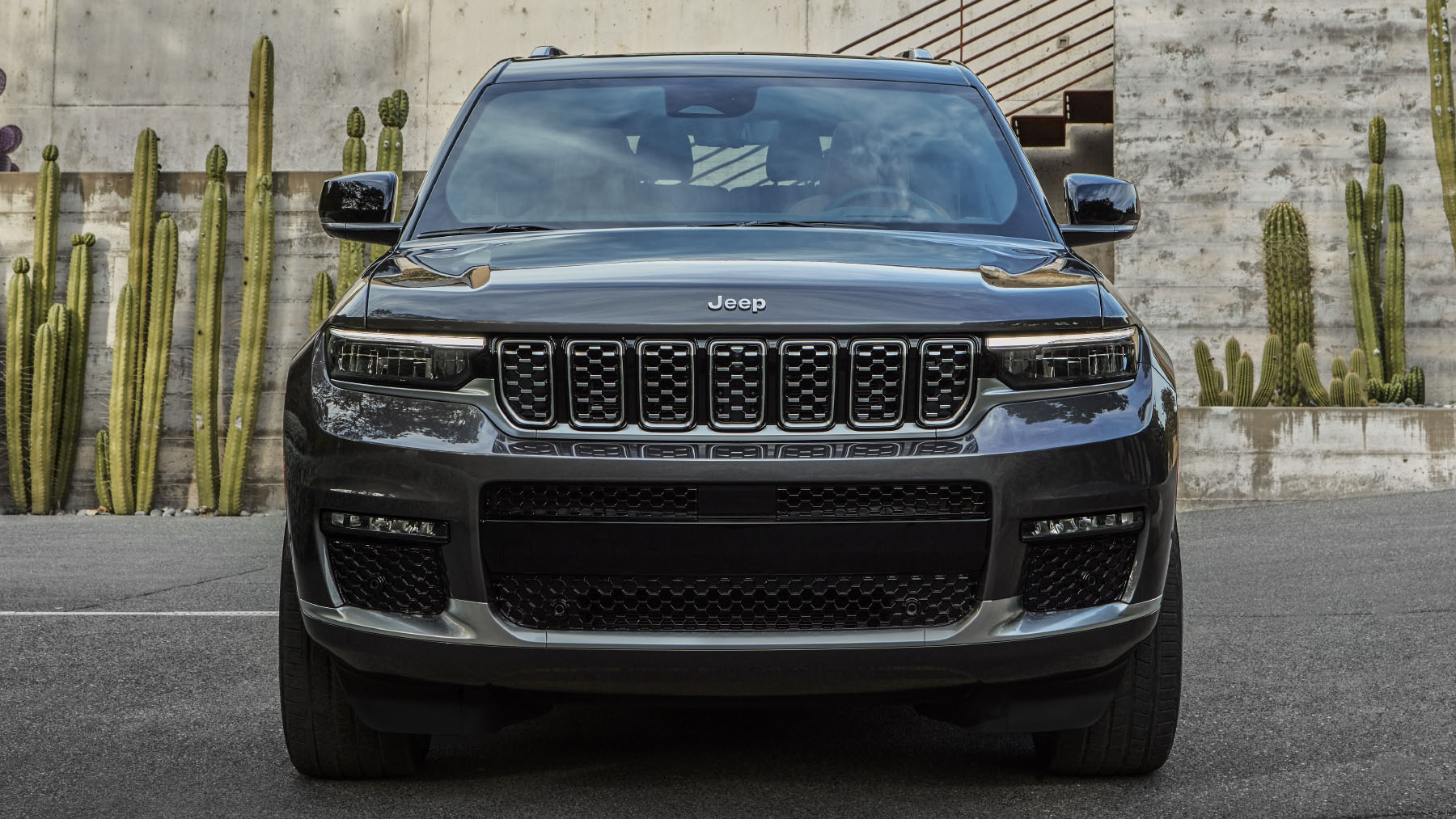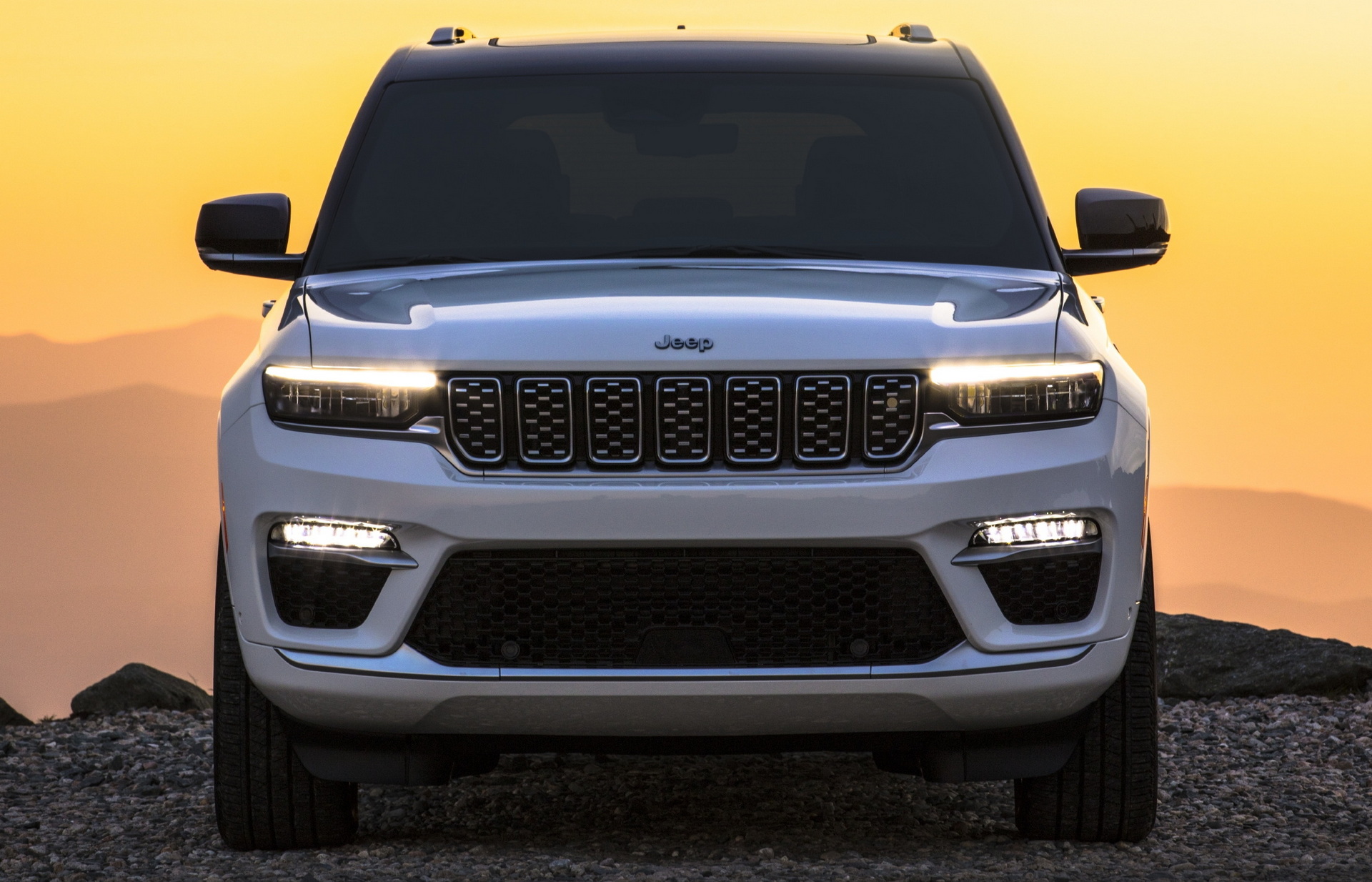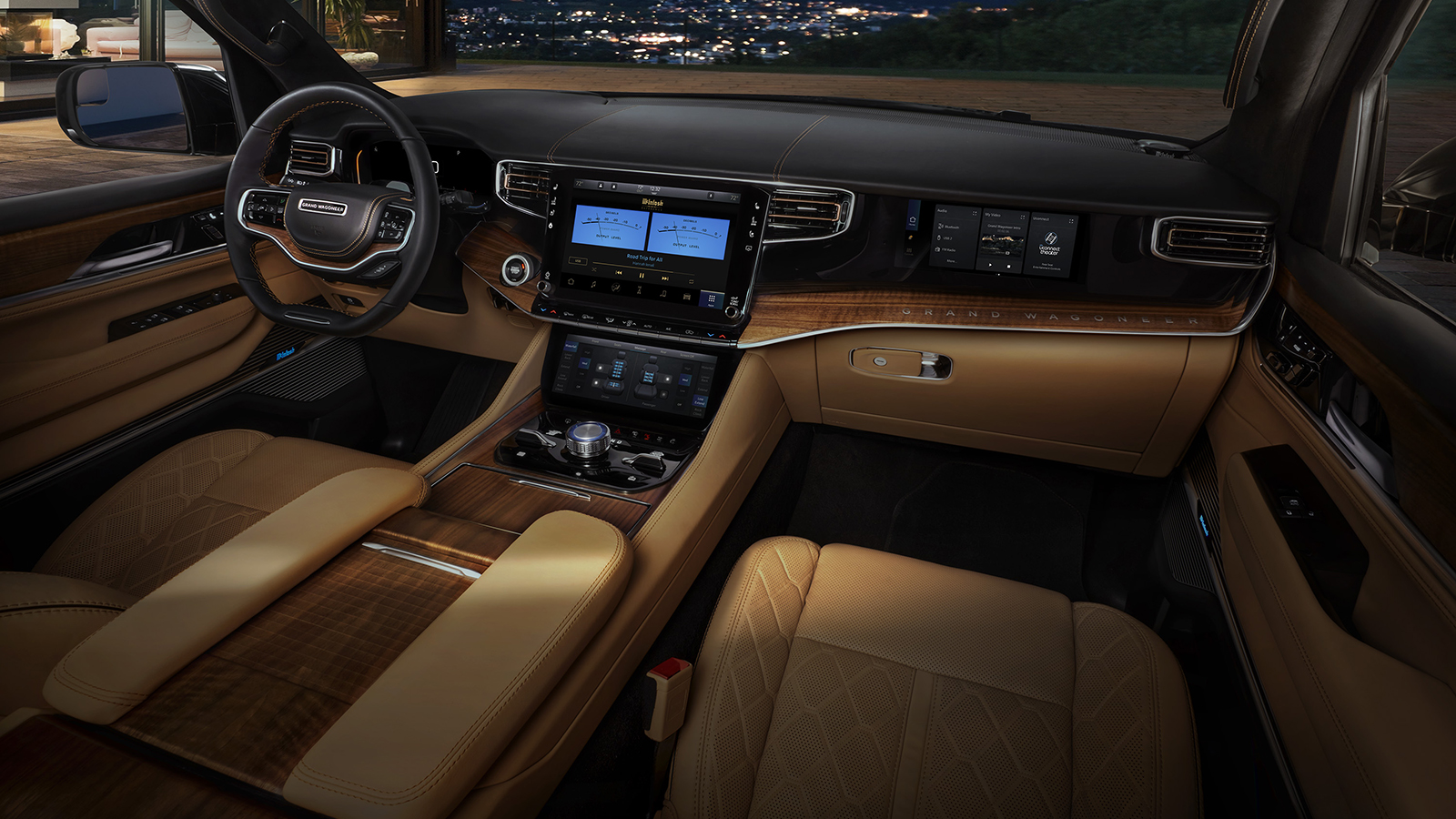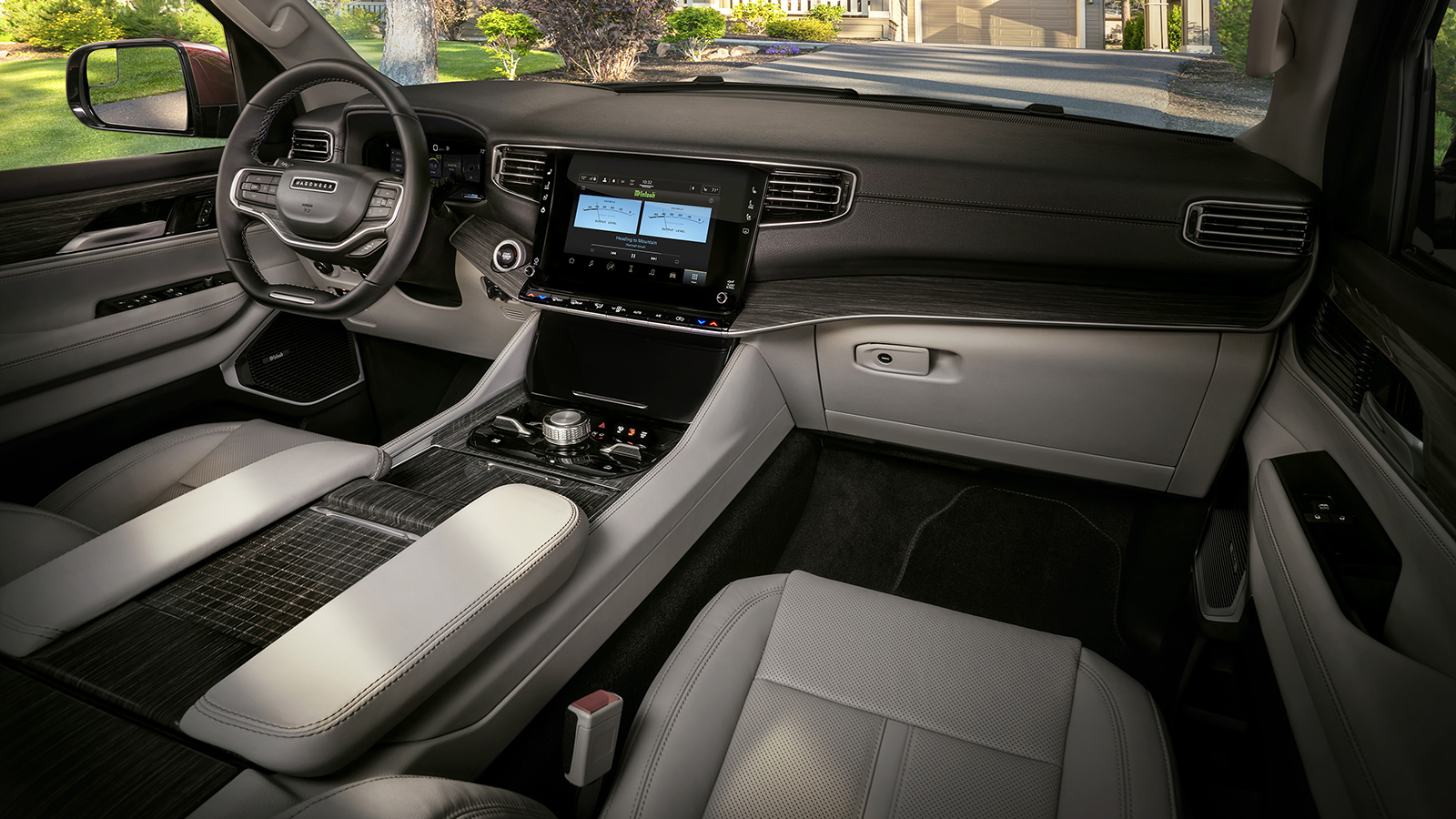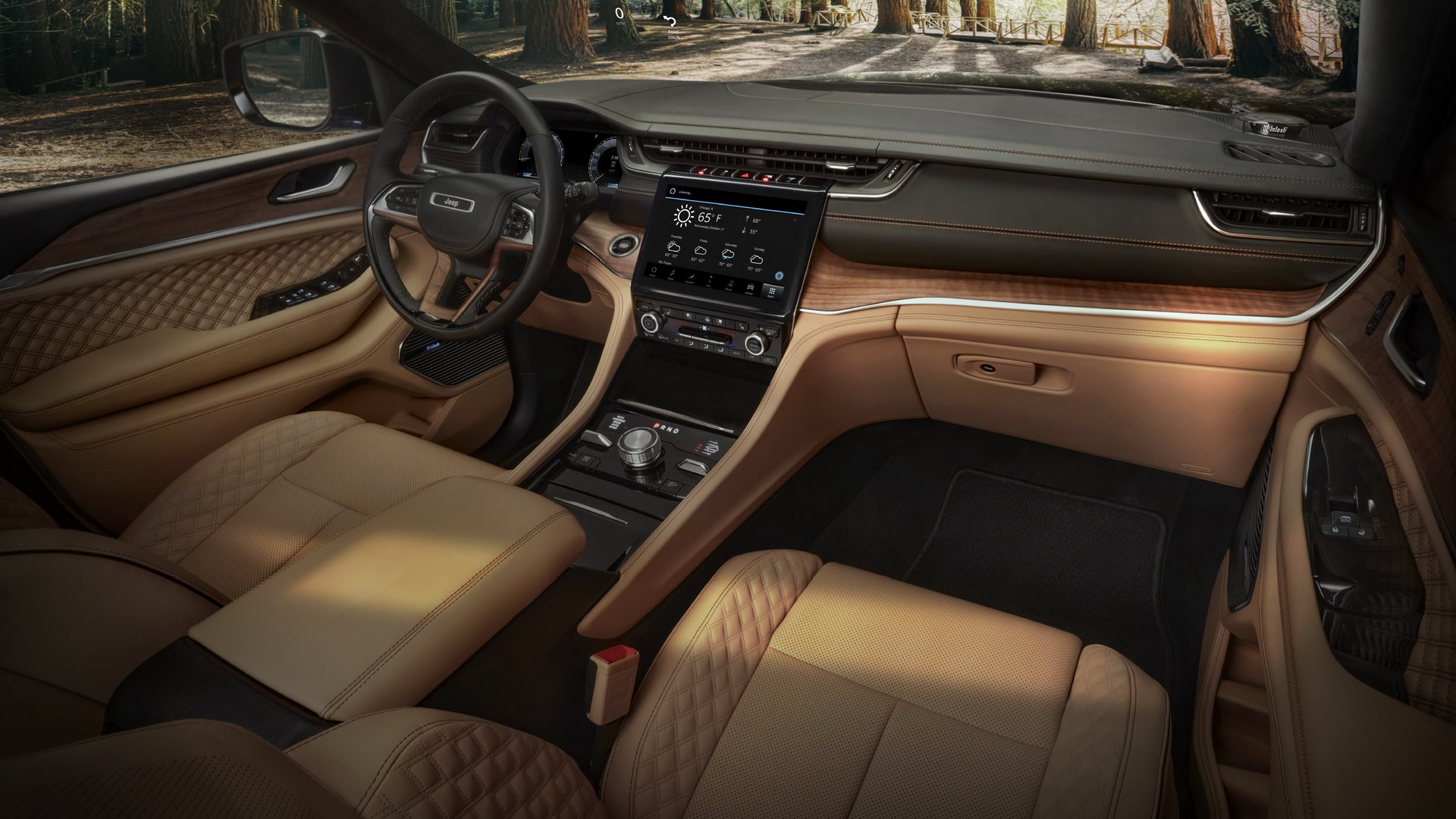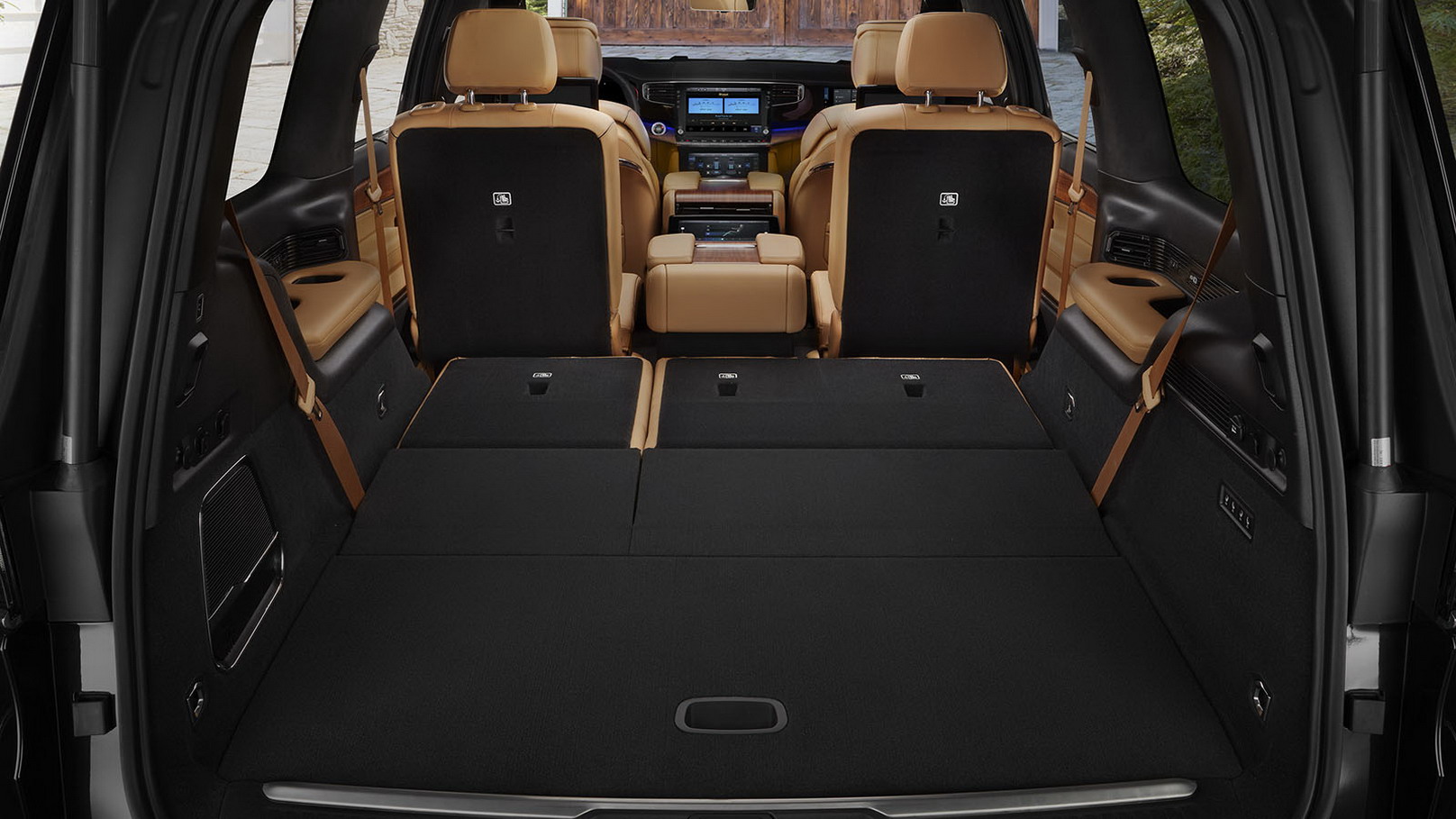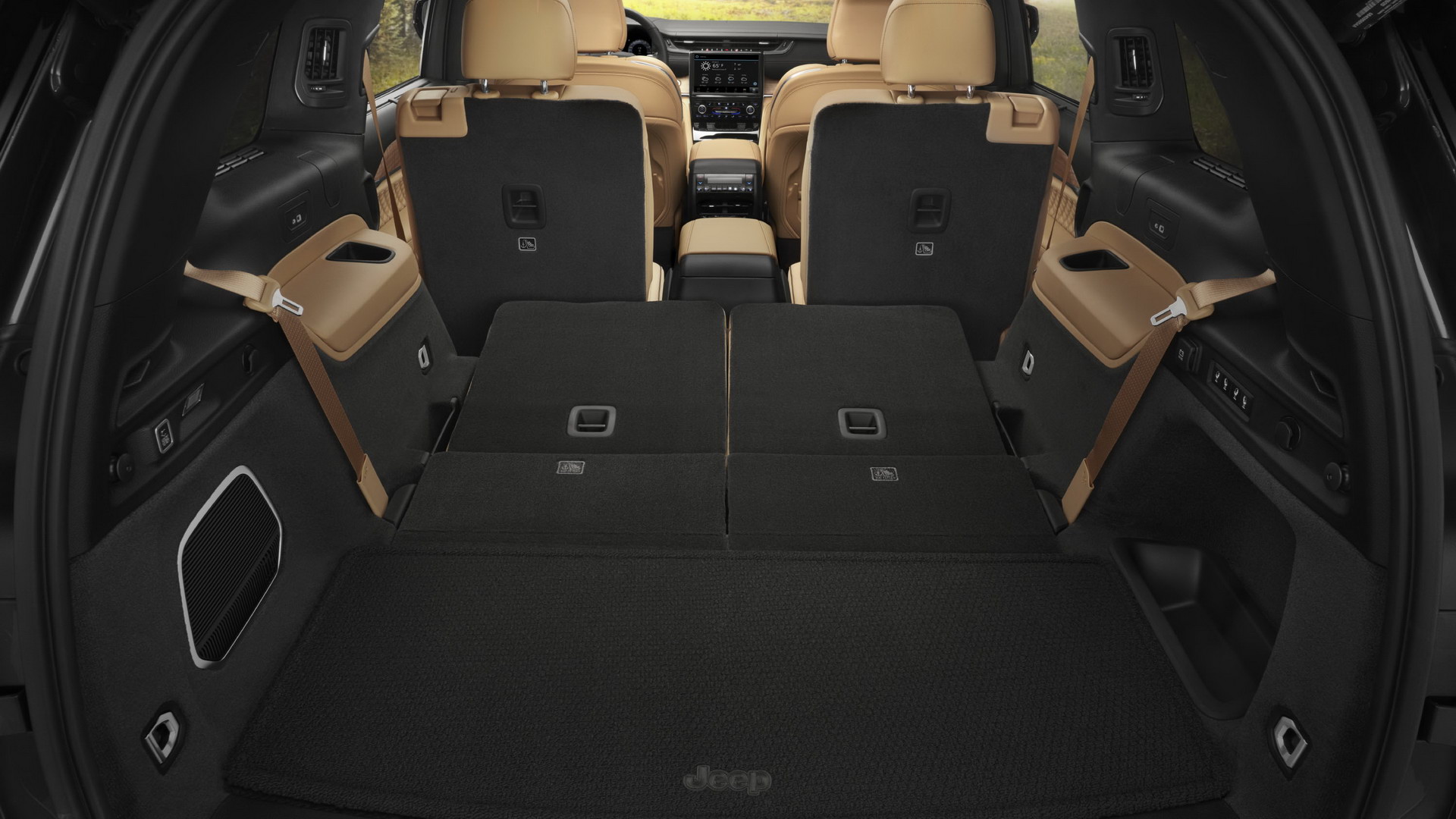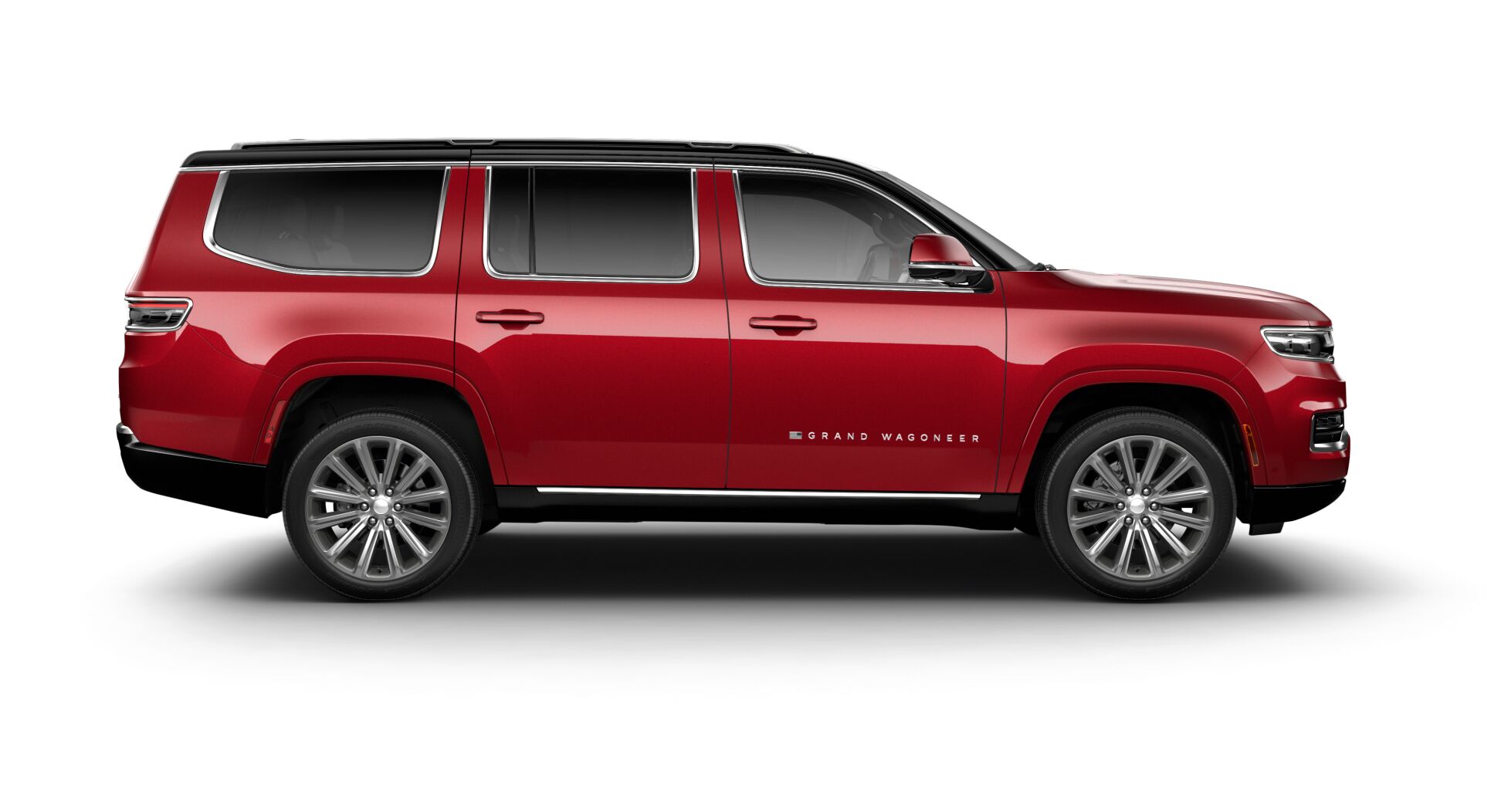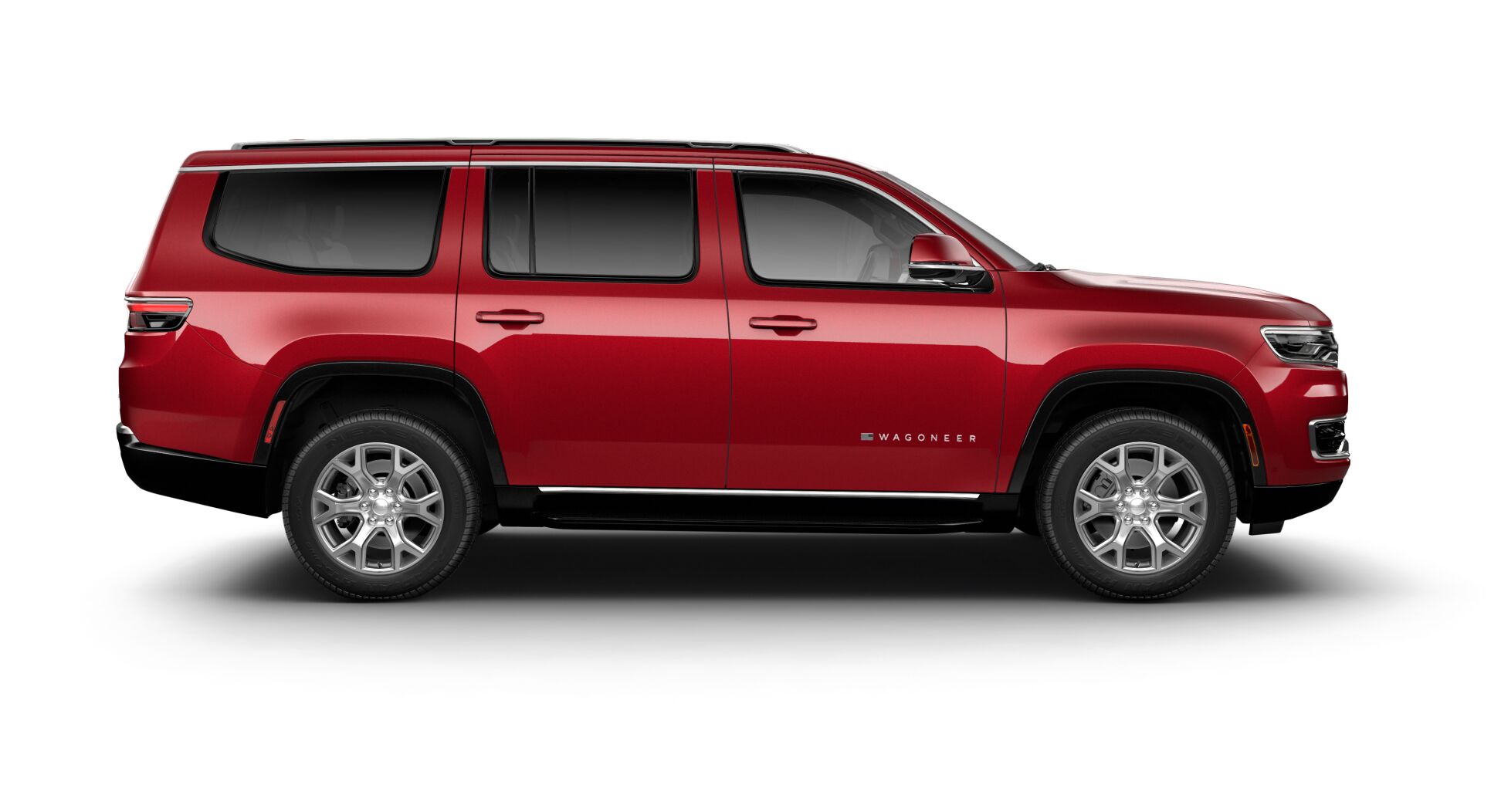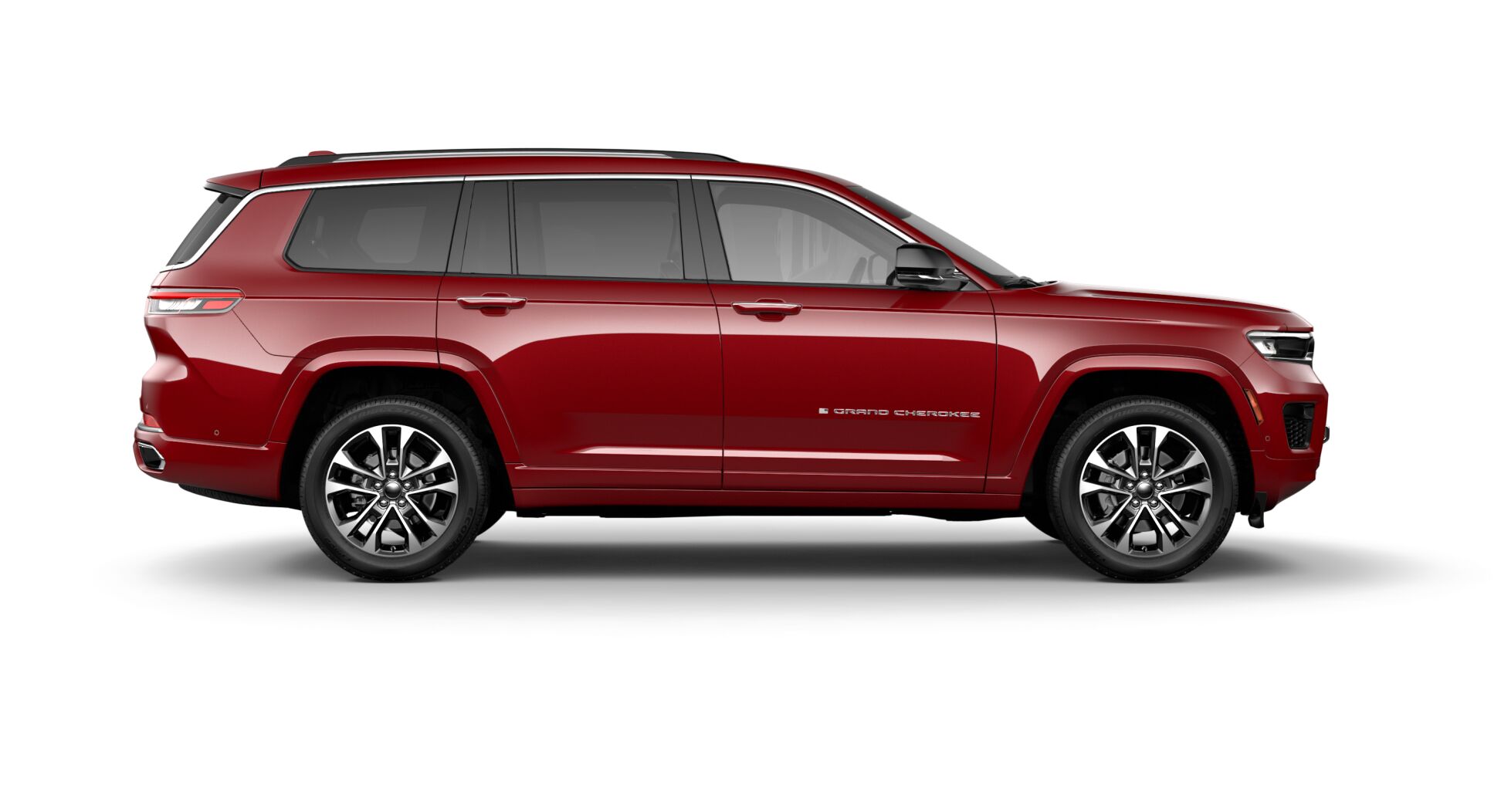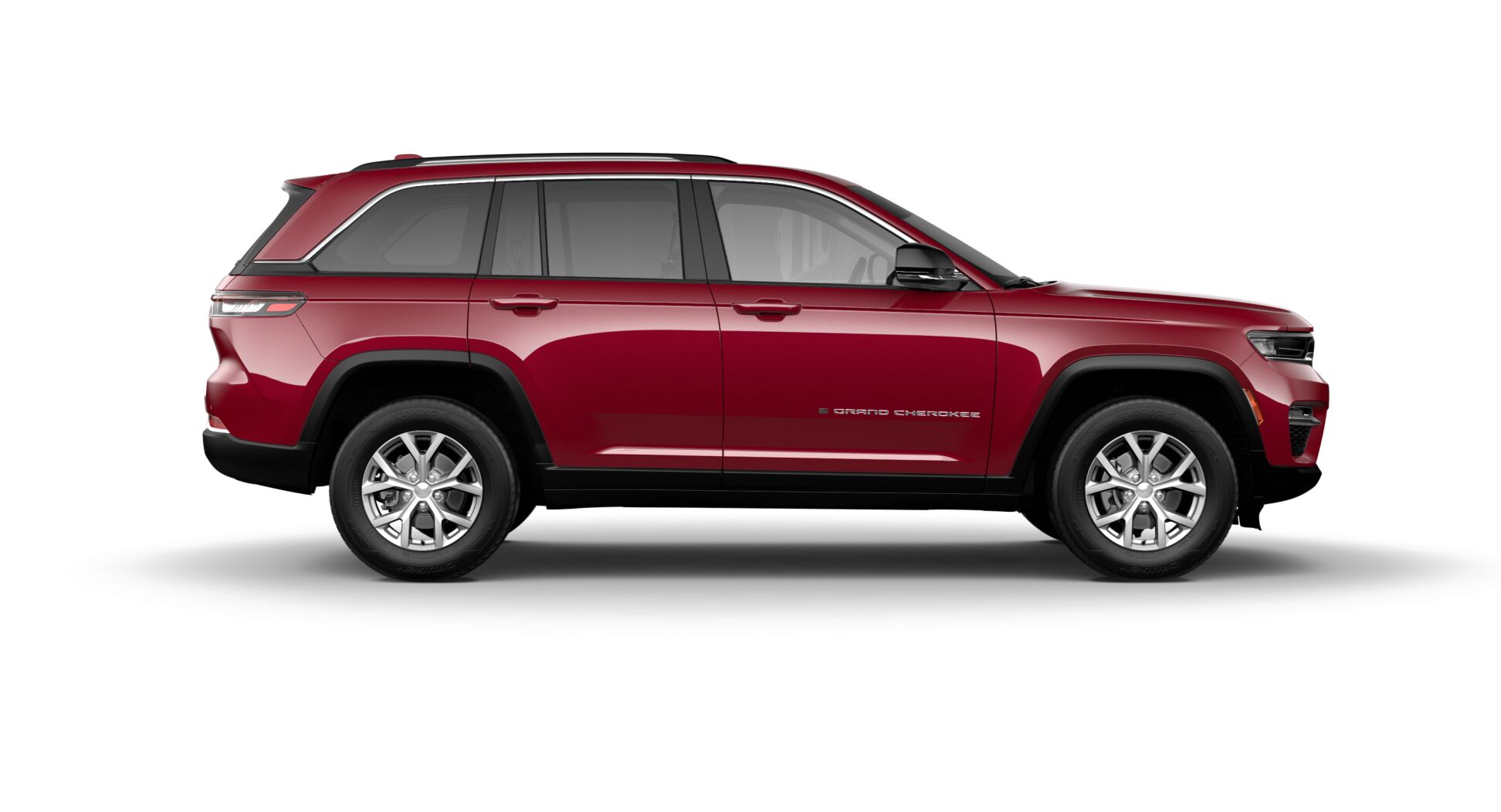With the introduction of the new 2022 Grand Cherokee today, Jeep’s lineup has become a little bit more complex, but fret not, we’re here to explain and guide you through the differences between the Grand Cherokee and the Wagoneer models. [Updated 9/29/2021]
Jeep has been on a roll with the handsome new large luxury SUVs. Between the Grand Wagoneer, the Wagoneer, the Grand Cherokee L and now the short wheelbase Grand Cherokee, it can be hard to keep all these Jeeps straight. So we’ve assembled our finest team of Spot the Difference champions to help us find what makes each SUV unique.
The Size That Counts
The biggest difference between the Wagoneers, the Grand Cherokee L, and the Grand Cherokee is the size. So the first thing to look out for is how big they all are.
See Also: The All-New 2022 Jeep Wagoneer And Grand Wagoneer In +150 Photos
The Wagoneers are 4-inches (101.6 mm) taller, 6.3-inches (160 mm) wider, and 9.8-inches (249 mm) longer than a Grand Cherokee L. Similarly, the L is 11.4-inches (290 mm) longer than the new SWB Grand Cherokee. That puts the Wagoneer and Grand Wagoneer in the realm of something like the Chevrolet Tahoe or the Cadillac Escalade size-wise (but look out for these competitors to return later).
At 193.5-inches long, the Grand Cherokee is roughly as long as the BMW X5. Meanwhile, the Grand Cherokee L, at 204.9-inches long, is about the same length as a BMW X7.
Along with being bigger, the Wagoneers are boxier than the Grand Cherokees. The hatch at the rear is taller and straighter on the larger vehicles. The GC L, meanwhile, has a larger D-pillar and a (slightly) more sloping roofline. The standard 2022 Grand Cherokee’s D-pillar, meanwhile, is formed even more cohesively into the roof.
Beyond the size, there’s also Jeep’s new proud grille and headlights. It’s one of the design cues that unites all four of these vehicles and it’s certainly the biggest difference (design-wise) between the last-gen Grand Cherokee and the new models. Back to the newest Jeeps, although it’s clear that the grilles were all drawn by the same hand, there are still some subtle differences.
For one, there’s the script. The Grand Cherokees have “Jeep” over the grille, while the Wagoneer puts its name there instead. On the Grand Wagoneer, the word “Wagoneer” is lowered onto the actual grille section and the hood is unsullied.
The grille looks bigger on the Grand Cherokees and the lower grille section is much less complicated and ornate. The Wagoneers, meanwhile, make use of their frontage to add design elements. In the case of the Grand Wagoneer, there’s more glitz in the form of a thick chrome mustache, whereas the standard Wagoneer keeps things subtle and thin.
Related: 2021 Jeep Grand Cherokee L Confirmed To Start At $36,995, Top Out At $65,290
While the Grand Cherokee L comes standard with 18-inch wheels, the Wagoneers’ wheels start at 18-inches and go all the way up to 22-inches across.
Although the Wagoneers are based on the same body, the relationship between these SUVs is akin to the relationship between the Chevy Tahoe (Wagoneer) and the Cadillac Escalade (Grand Wagoneer). So, as a rule, if you see a lot of chrome you’re looking at a Grand. Helpfully, Jeep has also taken the time to write the vehicles’ names all over the cars.
What’s Inside That Matters
Although the Grand Cherokee took a step up in terms of interior design with the L, thanks to its 8.4-inch screen (or up to 10.1) and elegant new materials, it’s a step behind the Wagoneers.
First and foremost, there’s the size difference. With seating for up to eight people (one more than the GCL and three more than the new GC) and 116.7 cubic-feet (3,304 liters) of cargo volume behind the front seats (the GCL gets 84.6 cu-ft [2,396 liters] and the GC gets 69.7 [1,974 liters]), the Wagoneers really want to live up to their names.
Then there’s the luxury difference, too. Nappa leather comes standard no matter which Wagoneer you go for and you can live large in the Grand with Palermo quilted leather. Infotainment screens start at 10.1-inches in the Wagoneer and go up to 12-inches in the Grand Wagoneer. That’s not where the story stops, though.
The Grand Wagoneer is littered with infotainment devices. Under the 12-inch standard screen, there’s another 10.3-inch screen with climate controls. Behind the steering wheel, there’s a 12.3-inch digital gauge cluster (2-inches bigger than the standard Wagoneer’s), and then there’s the piece de resistance, the 10.3-inch passenger display (which new Grand Cherokee buyers can also option) that can play movies through your Amazon Fire account. And then, of course, there are the 10.1-inch screens for the second-row passengers.
As with the exterior, the biggest difference between the Grand Cherokees and the Wagoneers is size. The biggest difference between the Wagoneer and the Grand Wagoneer is the level of opulence. If you’re thinking, “This looks nice” you’re probably in a Grand Cherokee. If you’re thinking “This is nice and roomy,” you’re in the GCL. If you’re thinking, “This is huge!” you might be in a Wagoneer. And if you’re thinking “I wonder if ‘Lochdown’ will be the last Grand Tour special,” you’re the passenger in a Grand Wagoneer.
Power Wagoneers
Sensing a pattern yet? Well, it continues under the hood. Although the Grand Cherokees can be had with a 5.7-liter V8 making 357 hp (362 PS/266 kW), both comes with a standard with a 3.6-liter V6. It is a decent one, though, making 290 horses (294 PS/216 kW). The short-wheelbase Grand Cherokee, meanwhile, is offered as a hybrid as well – the first in the model’s history. The 4xe pairs the same 2.0-liter engine with an electric motor that is supplied by a 17 kWh battery as the plug-in Wrangler. All in, it makes 375 hp (380 PS/279 kW) and 470 lb-ft (637 Nm) of torque.
The Wagoneers, meanwhile, come standard with V8 hooked up to an 8-speed automatic transmission. In the Wagoneer, it’s a 5.7-liter V8 with cylinder deactivation paired to a 48-volt hybrid assist that Jeep calls eTorque, which makes a healthy 392 hp (397 PS/292 kW) and 404 lb-ft (548 Nm) of torque. In the Grand Wagoneer, there’s a bigger 6.4-liter V8 with cylinder deactivation that gets an even healthier 471 hp (477 PS/351 kW) and 455 lb-ft (617 Nm) of torque.
Somewhat surprisingly, the Wagoneer is rated to tow up to 10,000 lbs (4,536 kg) whereas the Grand Wagoneer taps out at 9,860 lbs (4,472 kg), despite the bigger motor. Although the Grand Cherokees can’t quite keep up with their larger siblings, they do manage an impressive 7,200 lbs (3,265 kg) of towing with the V8.
The Bigger The Options List The Bigger The Bill
As you might expect, the price will be the biggest differentiator for customers. Prices for the Grand Cherokee haven’t been announced yet, but we would expect it to start at less than the Grand Cherokee L, which kicks off from at $38,635 before delivery. Prices on the Wagoneer start at $68,590. If you want the most luxury, though, you’ll have to pay the Grand Wagoneer’s starting price of $87,590 and which can shoot all the way up to $103,995 for the Series III, with all MSRPs listed here excluding a $2,000 delivery fee.





